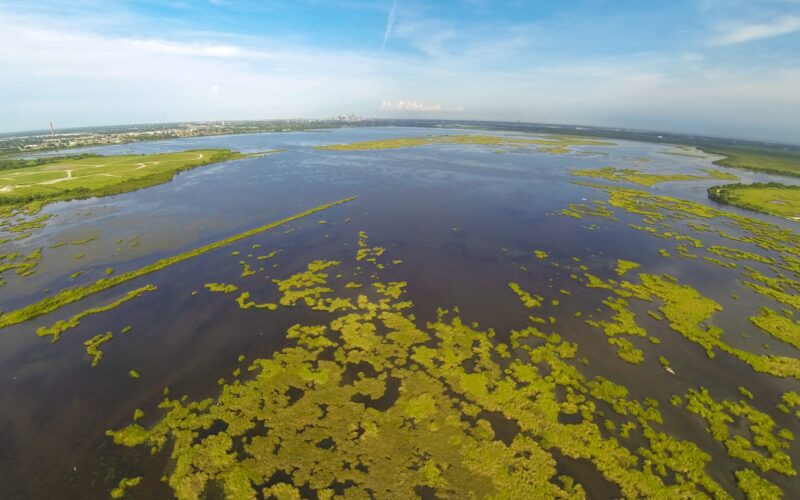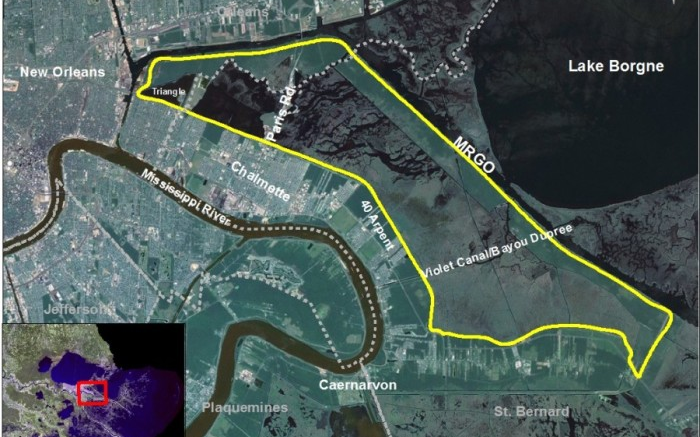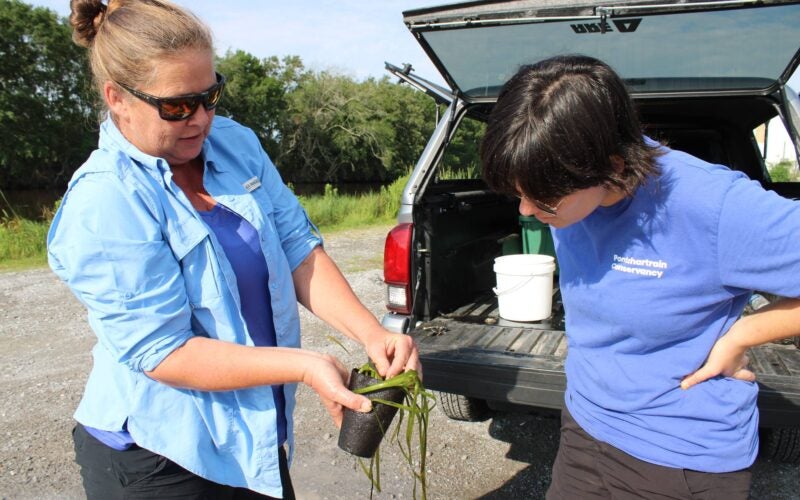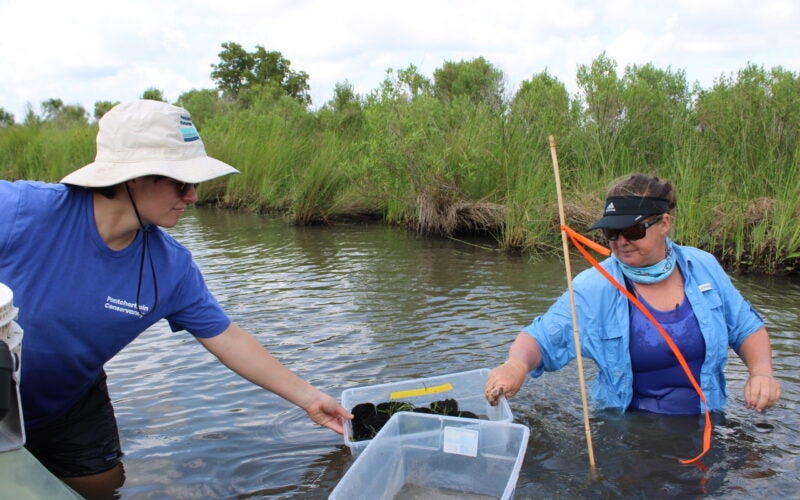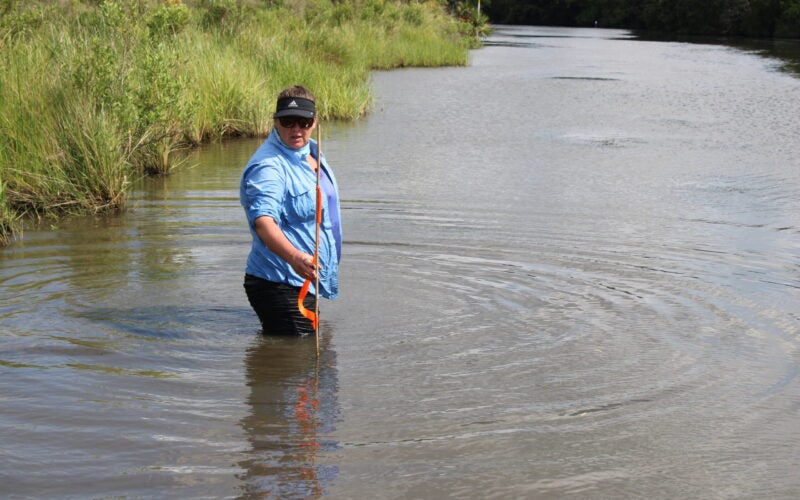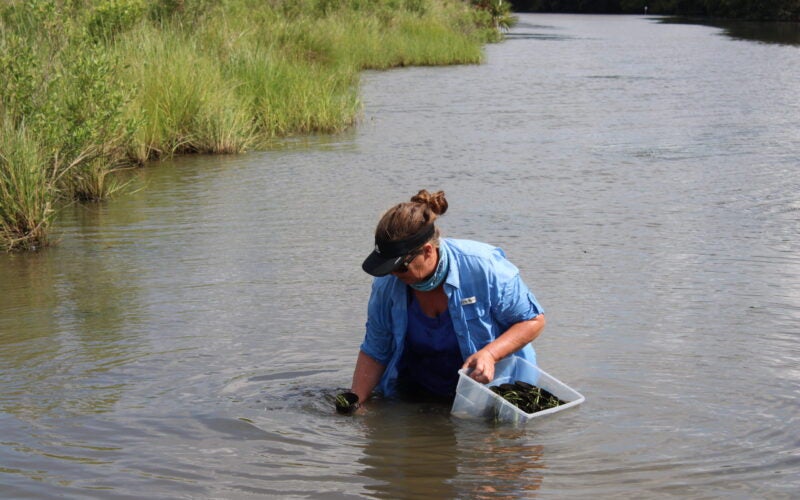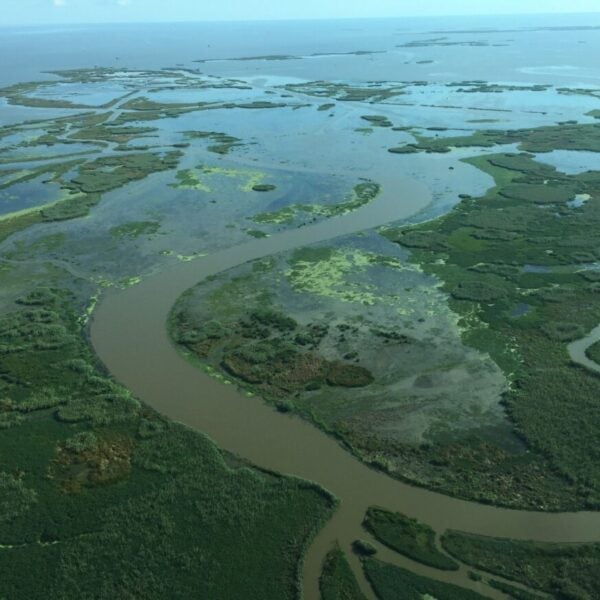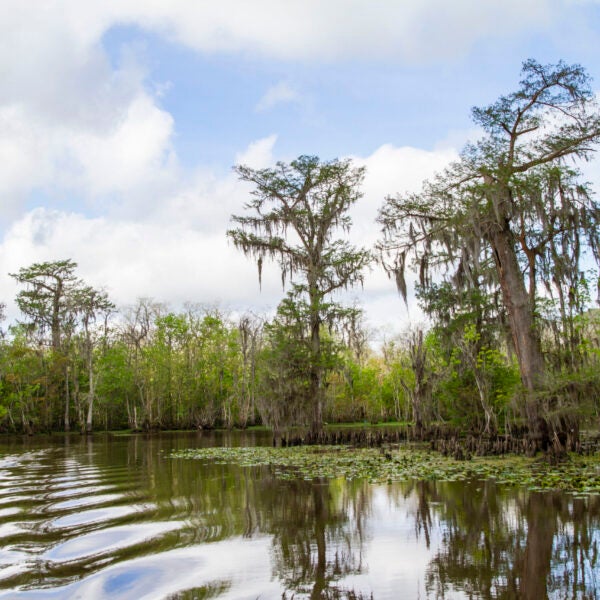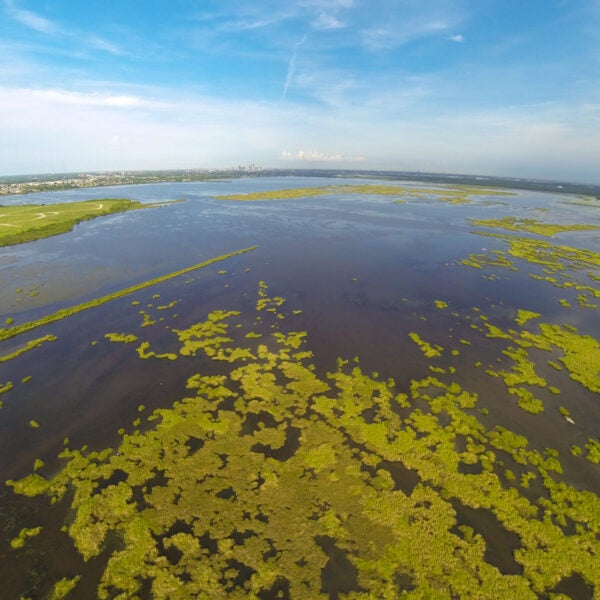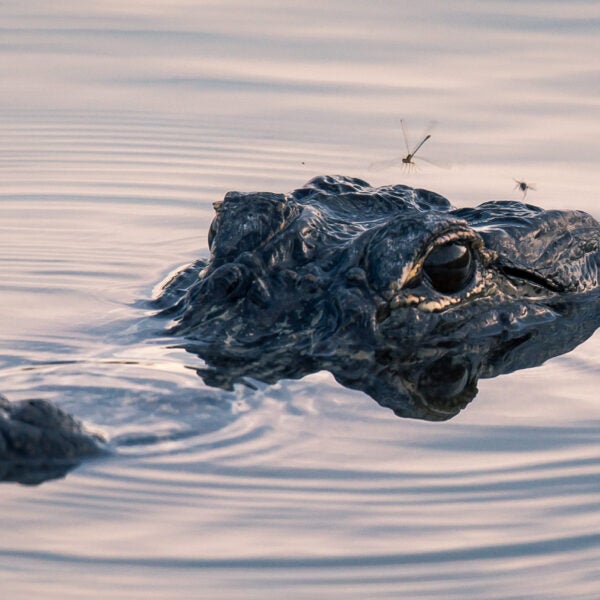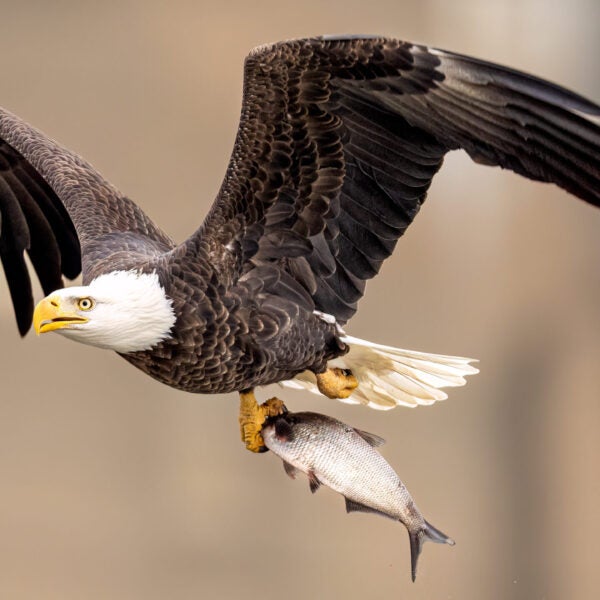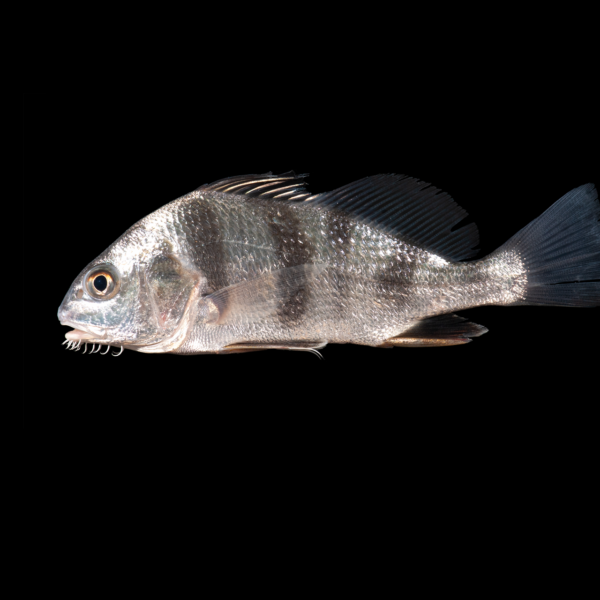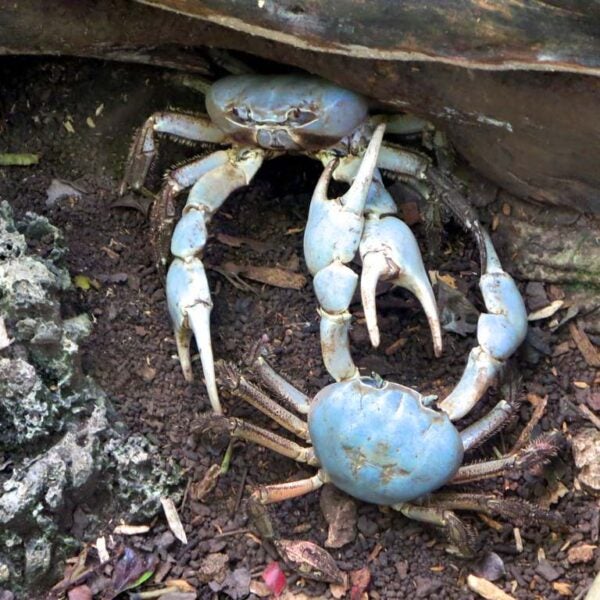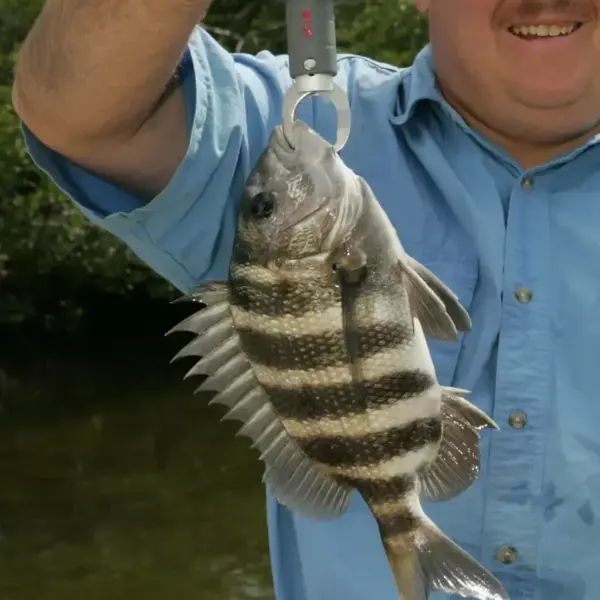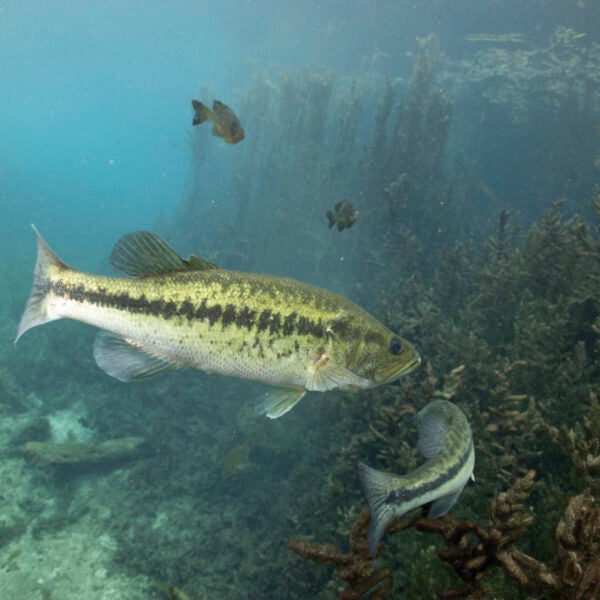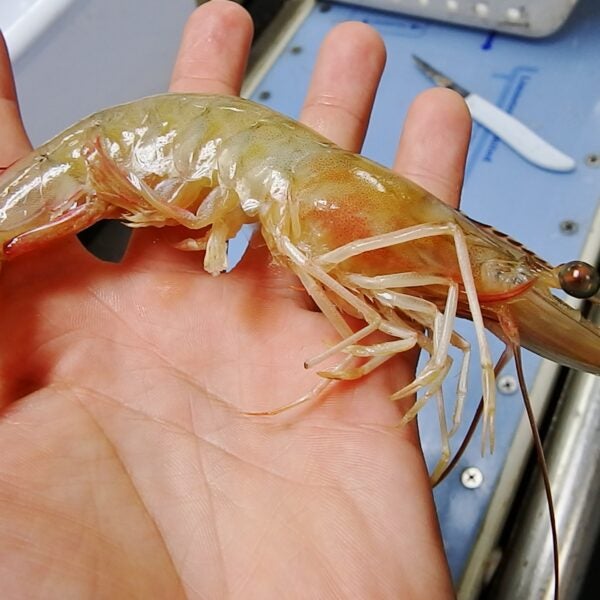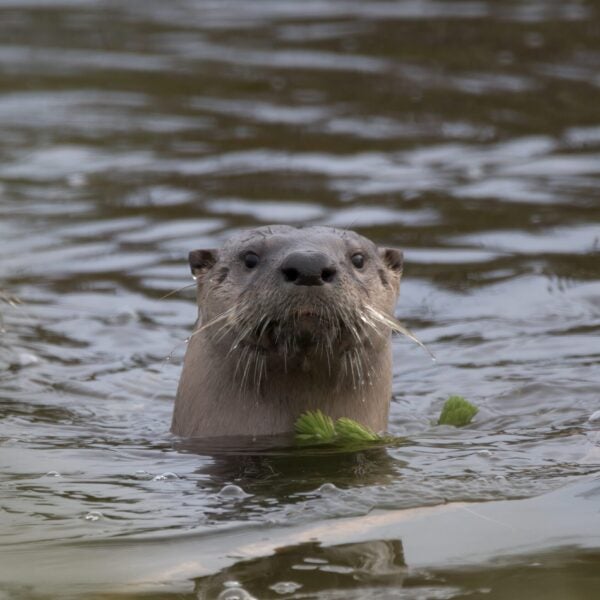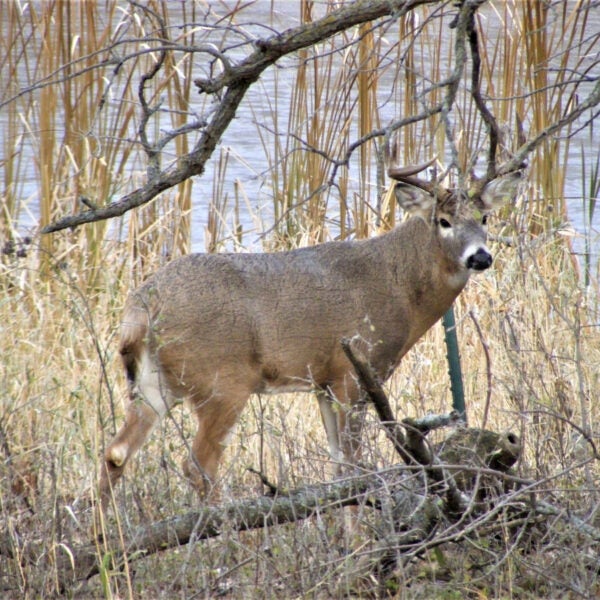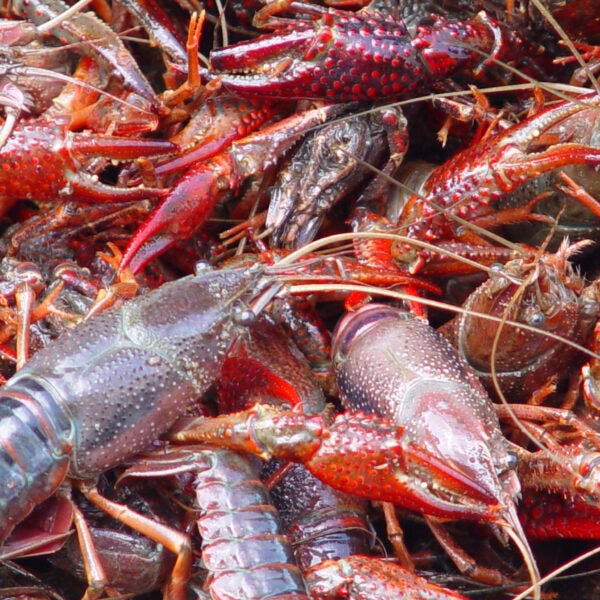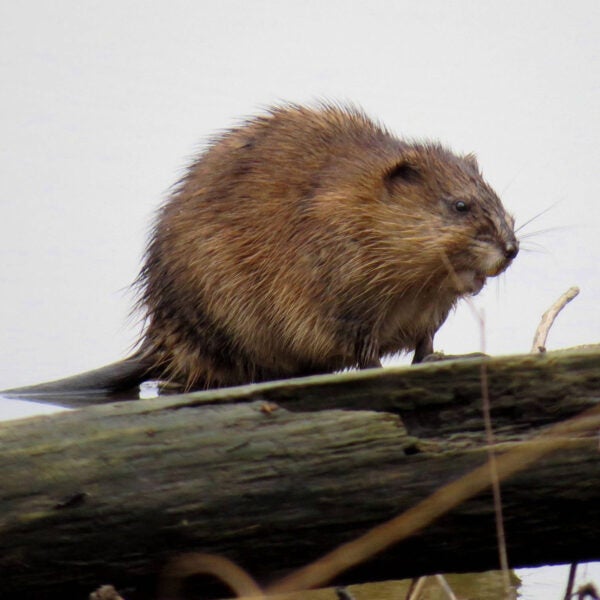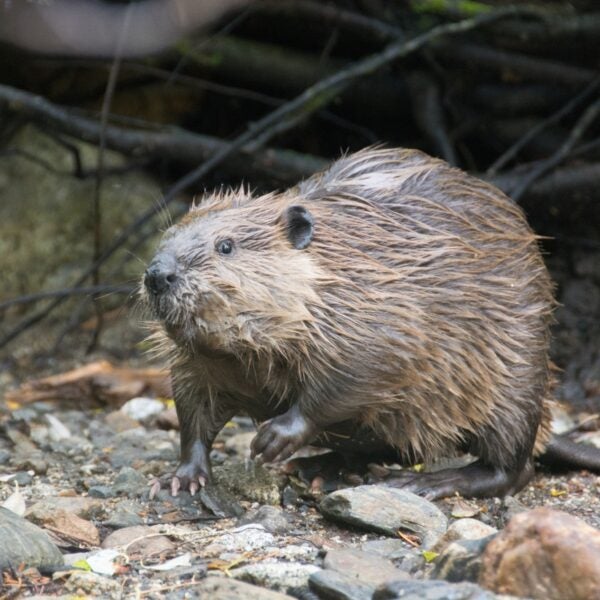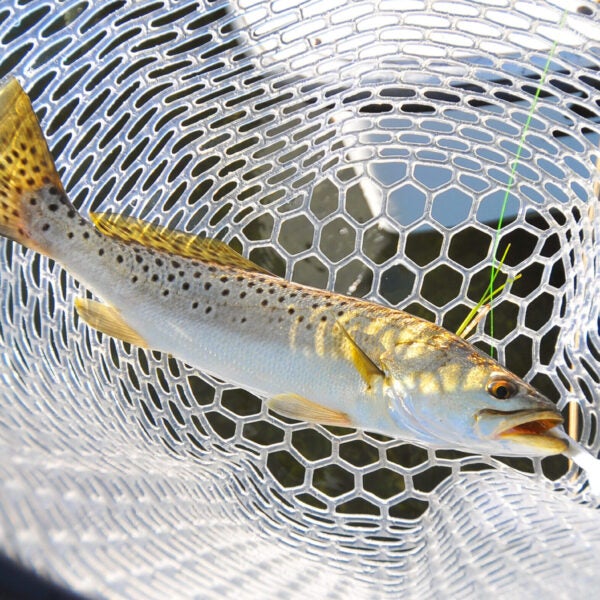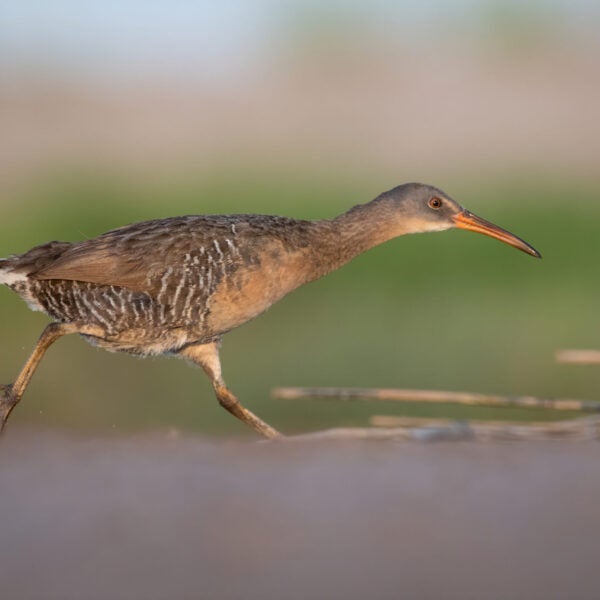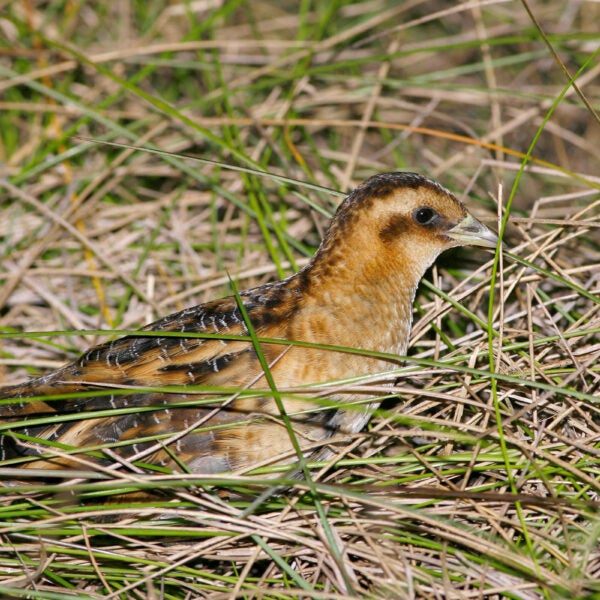About This Project
Project ID: 014a & 040
Parish: Orleans, St. Bernard
Type: Combination Projects, Fresh Water Diversion, Marsh Creation
Project Implementation
Project 1: Central Wetlands Diversion
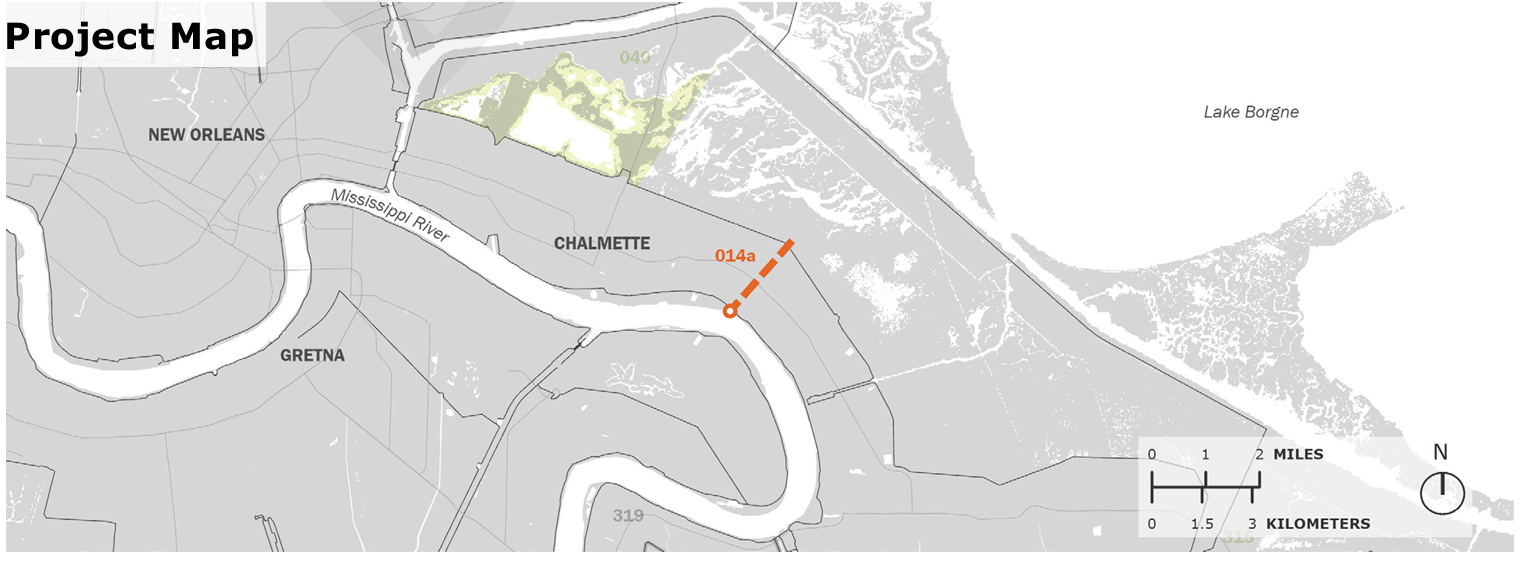
Coastal Master Plan Project ID: 014a
Region: Pontchartrain
Parish: St. Bernard
Description: Diversion into Central Wetlands near Violet to provide sediment for emergent marsh creation and freshwater to sustain existing wetlands, 5,000 cfs capacity (modeled at a constant flow of 5,000 cfs, independent of the Mississippi River flow).
CPRA Project Factsheet
Project 2: Central Wetlands Marsh Creation
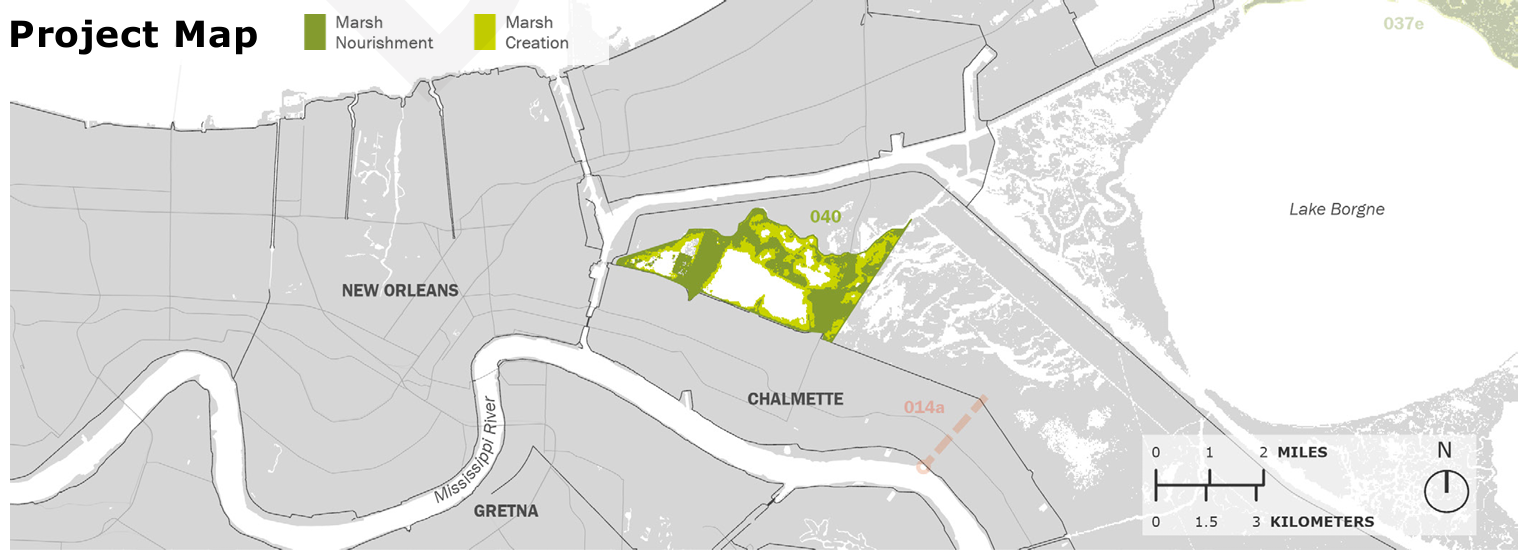
Coastal Master Plan Project ID: 040
Region: Pontchartrain
Parish: St. Bernard, Orleans
Description: Creation of marsh within a footprint of approximately 3,800 acres in Central Wetlands near Bayou Bienvenue to create new wetland habitat, restore degraded marsh, and reduce wave erosion.
CPRA Project Factsheet
What is a Diversion Project?
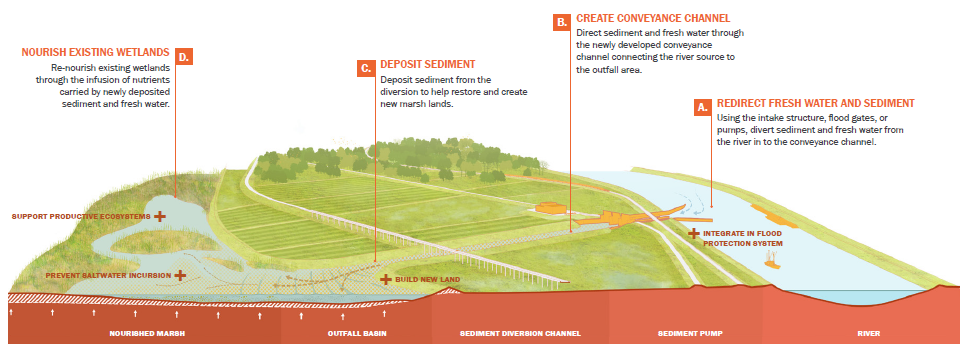
Graphic by SCAPE, Published in 2023 Coastal Master Plan
Diversions mimic nature’s historic land-building processes by using the power of the river to move sediment and fresh water from the river into nearby basins. This project type can not only build new land but also provide a sustainable source of sand and mud necessary to sustain and increase the health of existing wetlands over time. Sediment diversions can also re-establish or maintain the fresh end of the estuary, originally lost to saltwater intrusion, ensuring that the range of fresh to saltwater habitats that makes Louisiana’s estuaries so productive persists into the future. Sediment diversions also help sustain nearby marsh creation, barrier island and ridge restoration projects.
Other Diversion Projects
Mid-Barataria Sediment Diversion | Mid-Breton Sediment Diversion | River Reintroduction into Maurepas Swamp | Atchafalaya Diversions | Manchac Landbridge Diversion | Three Mile Pass Marsh Creation and Hydrologic Restoration | Ama Diversion | Union Diversion
What is a Marsh Creation Project?
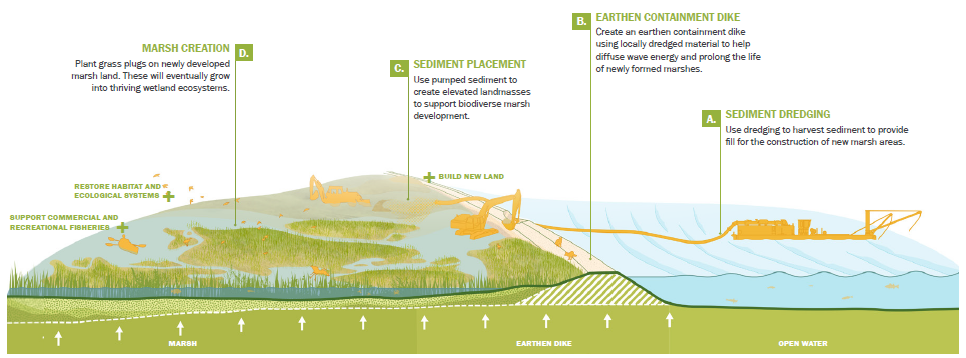
Graphic by SCAPE, published in 2023 Coastal Master Plan.
Marsh creation or “dredging” uses sediment from the Mississippi River, nearby water bottoms or offshore shoals to build land in shallow, open water areas, typically where land has been lost. These projects can build land fairly quickly, but will eventually fall victim to the same process that caused the land to disappear originally. This type of project can be used in conjunction with sediment diversions to trap sediment, and sediment diversions can lengthen the lifespan of marsh creation projects by providing a continual source of sediment to the new marsh surface.
Other Marsh Creation Projects
Large Scale Barataria Marsh Creation | New Orleans East Marsh Creation | Three Mile Pass Marsh Creation and Hydrologic Restoration | Delacroix Marsh Creation | East Bayou Lafourche Marsh Creation | Calcasieu Lake Marsh Creation | Belle Pass-Golden Meadow Marsh Creation | Golden Triangle Marsh Creation
Getting Muddy: Pontchartrain Conservancy
Members of Pontchartrain Conservancy’s Science team recently visited the Central Wetlands to do their part in restoring Louisiana’s wetlands. The team was able to plant 250 Vallisneria americana (wild celery or eelgrass) to help prevent erosion, clean the water column, and provide a spawning ground for fish and crabs. Pontchartrain Conservancy is part of the Central Wetlands Reforestation Collective with Coalition to Restore Coastal Louisiana, Common Ground Relief, The Lower 9th Ward Center for Sustainable Engagement and Development and Docville Farm.
Look for the next volunteer opportunity to join the cause: https://centralwetlands.org/
